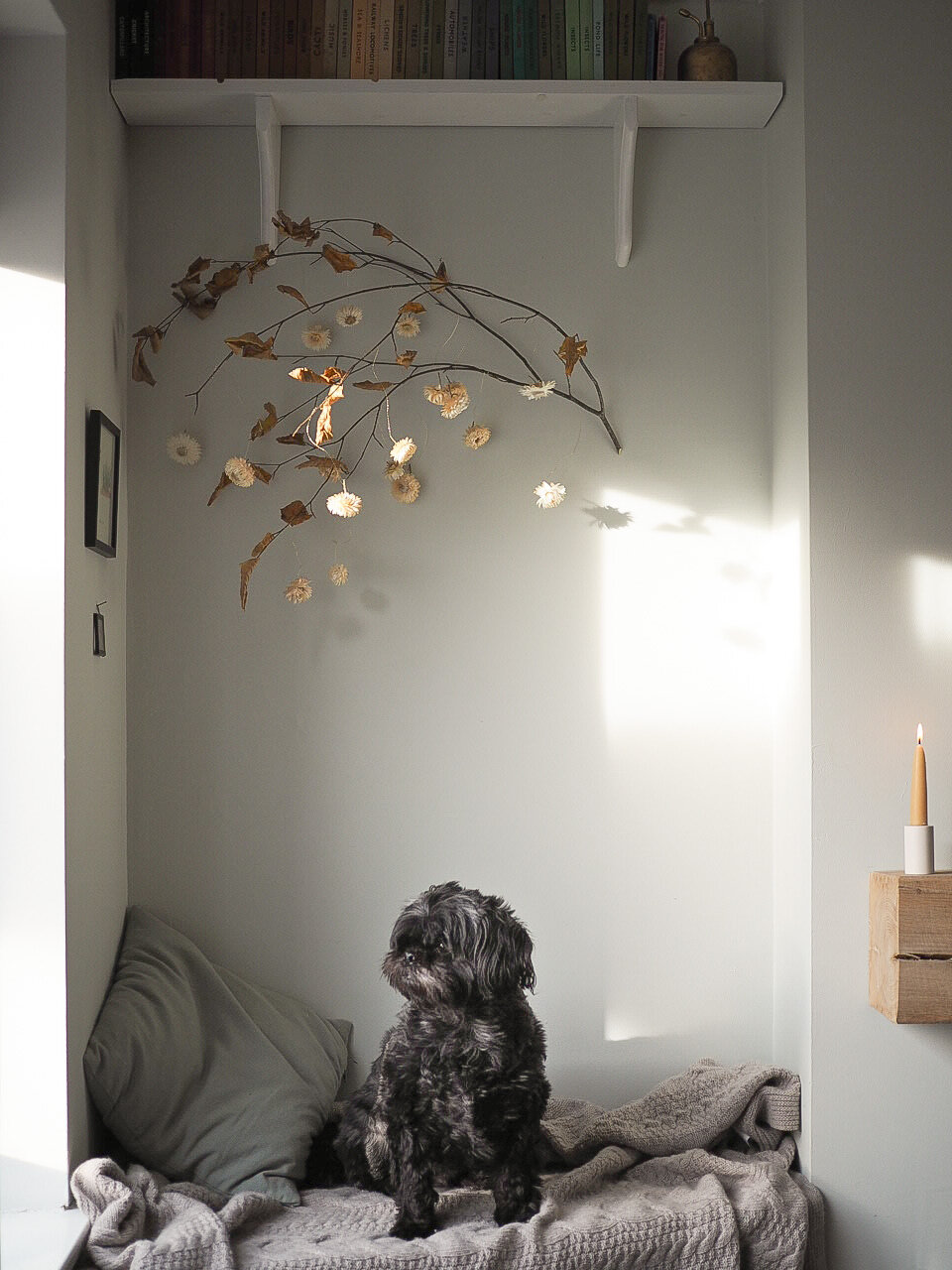Dried Flowers are Trending - Still!
Recently I’ve been asking myself, was 2019 the year for dried flowers? It's hard sometimes, when you’re in a thing, to not see that thing everywhere. Been pregnant? If you have then I bet you can remember seeing pregnant women everywhere you went during those later months of carrying your babe in your swollen belly. And I felt the same about dried flowers last year (without putting them on the same level of importance of course!), with inspiring florists embracing the use of everlastings for long lasting sustainable displays to Chelsea in Bloom basically being 50% dried flowers the movement felt more mainstream than it has in a long long while.
A fully natural dried flower display for the home
Of course, I have been coveting dried flowers for many years now and have been watching people's appreciation of them shift as time goes on. More exclamations of joy upon seeing a dried bloom and less wistful sighs of “they remind me of my grandma”.
The future of the dried flower trend
Give a bunch of dried blooms instead of fresh
The question on my lips and a few flower farming friends of mine, is whether the revival of dried flowers is a trend or something that is here to stay. When we consider the increasing awareness and need for sustainable floristry, in conjunction with the boom of UK flower farmers, I have to wonder if dried flowers and their increased popularity are not intrinsically linked to these shifts in people’s ethics and buying habits. Do dried flowers not offer UK growers and florists a way to extend their selling period across the year and to incorporate more UK stems in their creations? Our homes really don’t need to be full of fresh flown blooms from far afield at any point in the year, and everlastings will bring you as much if not more joy than a bunch of scentless roses from South Africa will. I for one am hoping that this trend is here to stay
It starts with a seed
I’ve to congratulate the seed industry with their well time marketing plans. They always start with a teaser towards the end of the year and then as soon as we have bid farewell to the past and welcomed the start of the new, seed catalogues begin to land on our door mats! And this year there are some good ones, I was just a little bit excited to see that the Sarah Raven seed catalogue this year one page dedicated to dried flower seeds. It’s really encouraging to see that even seed suppliers are picking up on this trend and I hope that means it’ll last more than just a season. And because everything starts with the seed (in the world of gardening at least), I’ve started a blog post series entitled “growing a dried flower garden” where I’ll be sharing my experiences of growing and planting this year and I hope it’ll inspire you. A few other suppliers i dried flower seeds that I remain loyal too are Chiltern Seeds, Higgedly Garden and Seedaholics. There are more I am sure, but these are a good place to start
But there’s always a downside
Of course, just like in the movies! Whilst I am wholeheartedly celebrating this trend, there is a dark side that I’m educating myself )(and hopefully others) on and this is the use of bleached and sprayed flowers. I’m guilty of having used these flowers in the past because they are appealing, bleached ruscus is tantalisingly pretty and makes a stunning addition to bridal hair clips. But the process these flowers go through to get them to look the way they do is anything but natural and to call them everlastings is misleading at best. My eyes have been opened to the damage these flowers can do to our health (the smell of bleached flowers is overpowering) and the environment and its simply not worth it in my opinion. I pride myself in using only natural materials in my makes where I can and for my wreaths and displays to be fully compostable. Bleached and spray painted products are not natural and should not be composted, the chemicals used in creating these blooms should not be placed back in our soil.
A natural bleached white strawflower
The reality is that you can achieve those bleached and muted tones with natural materials, it just takes a little more time and consideration - something we have become accustomed to thinking we don’t have enough of. We are coming out of a throw away culture (I really hope), where convenience ruled and the world didn’t matter, but that’s changing and so I urge you, please look at alternatives when working with dried flowers. Avoid bleached and painted blooms and go for au natural, the planet and your body will thank you for it.
And embrace the beauty of everlastings, I promise you they will bring you so much joy over the Winter months!




